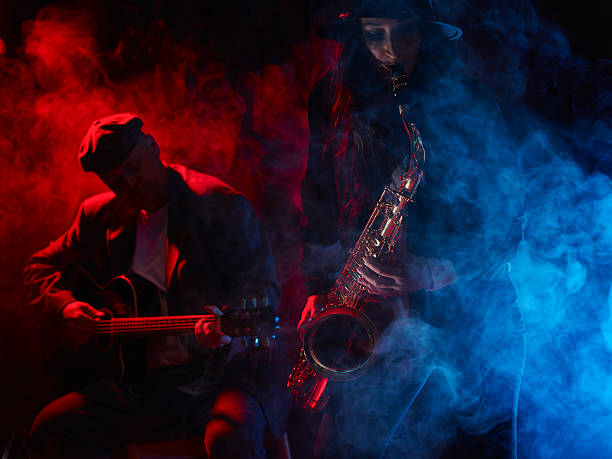How AI is Revolutionizing Art: Enhancing Creativity, Streamlining Workflows, and Expanding Boundaries Across Creative Disciplines
Artificial Intelligence (AI) has emerged not merely as a technological innovation but as a cultural force reshaping how humans create, interact with, and understand art. From generative visuals to musical compositions, literature, film production, and even architectural design, AI’s influence is pervasive. What once belonged to the realm of science fiction is now a functioning, evolving, and impactful presence across creative disciplines.

Historically, creativity was considered an innately human trait—an exclusive domain of emotional depth, imagination, and lived experience. However, recent decades have witnessed a paradigm shift: AI can now compose symphonies, paint canvases, design fashion, and write poems. Far from replacing artists, AI is becoming a powerful tool that enhances human creativity, simplifies workflows, and pushes the boundaries of what is considered art. This article traces the origins of AI in art, its major milestones, current applications, societal impacts, and future potential across different fields.
Historical Overview: The Evolution of AI in Art
The Precursor: Algorithmic Art in the Mid-20th Century
AI’s artistic roots can be traced to algorithmic art, which began in the 1950s and 1960s when computer scientists and artists started experimenting with programming to generate visual patterns. One of the early pioneers was Ben Laposky, who in 1952 created “oscillons” using an oscilloscope. Soon after, Frieder Nake and Georg Nees used early computers like the Zuse Z64 to produce algorithmic drawings.
In 1965, Harold Cohen, a British artist, began developing a computer program named AARON. Over the decades, AARON evolved into one of the most sophisticated early art-generating systems, capable of producing original paintings autonomously. Though it was rule-based rather than learning-based AI, it marked a key moment when machines began contributing directly to the visual arts.
Machine Learning and Neural Networks (1980s–2000s)
While algorithmic art remained mostly academic for decades, the field of artificial intelligence was developing rapidly in parallel. Early machine learning techniques—such as decision trees, k-nearest neighbors, and support vector machines—were limited in artistic scope. But the emergence of artificial neural networks in the 1980s, modeled loosely after the human brain, laid the foundation for creative AI.
The 1990s and early 2000s witnessed increasing interest in computational creativity and genetic algorithms for music and design. Tools like Cope’s Experiments in Musical Intelligence (EMI) demonstrated that AI could learn and emulate the styles of famous composers. Still, AI-generated art was not widely accepted as “real” art by the mainstream art world.
The Deep Learning Revolution (2012–Present)
The true revolution began in 2012 with the rise of deep learning—a type of machine learning based on large neural networks with multiple layers. It drastically improved the performance of AI in areas like image recognition, natural language processing, and generative modeling.
In 2014, Generative Adversarial Networks (GANs), introduced by Ian Goodfellow, changed the landscape entirely. GANs consist of two neural networks—the generator and the discriminator—that compete in a feedback loop to create increasingly realistic images, sounds, and text. This allowed AI to generate stunningly original visuals and even mimic artistic styles with impressive accuracy.
By 2018, GANs created an artwork titled Portrait of Edmond de Belamy, which was sold at Christie’s auction for $432,500, more than 40 times its estimate. This event sparked widespread debate over the nature of authorship, creativity, and the value of AI-generated art.
Enhancing Creativity: AI as a Creative Collaborator
Visual Art and Generative Design
AI today plays a prominent role in generative visual art, enabling artists to explore new aesthetic territories. Tools like DeepDream, developed by Google in 2015, used convolutional neural networks (CNNs) to produce hallucinogenic and surreal images by amplifying patterns in existing pictures. Artists began using these tools to explore new motifs that would be impossible to visualize manually.
Moreover, style transfer algorithms enabled users to reimagine photos in the styles of Van Gogh or Picasso. Apps like Prisma and platforms such as Runway ML, DALL·E (by OpenAI), and Midjourney have democratized AI art creation, making it accessible to non-artists and professionals alike.
Artists such as Refik Anadol employ AI and data visualization to create massive installations, turning real-time data into immersive audiovisual experiences. AI-generated fractals, motion art, and 3D designs are now exhibited in prestigious galleries and digital platforms such as SuperRare, Async Art, and Art Blocks.
Literature and Writing
AI-generated literature, once a novelty, is now approaching literary coherence. Language models like OpenAI’s GPT-3 and GPT-4 can generate poetry, stories, and essays that are syntactically correct and semantically rich. Writers use AI to brainstorm ideas, rewrite drafts, and simulate different voices and tones.
Experimental authors have published books co-written with AI, such as “1 the Road” (2018), an AI-driven homage to Jack Kerouac’s On the Road, generated using neural networks. AI tools like Sudowrite, Jasper, and ChatGPT are increasingly used in journalism, marketing, and publishing to streamline content creation.
Music and Sound Design
In music, AI is no longer just a compositional aid—it is a co-creator. Projects like AIVA (Artificial Intelligence Virtual Artist) compose orchestral scores for films, games, and commercials. OpenAI’s MuseNet and Jukebox can generate original music in multiple genres and even simulate the style of iconic musicians like Elvis Presley or Mozart.
Musicians like Taryn Southern, YACHT, and Holly Herndon have released albums created in collaboration with AI systems. These tools allow for endless musical experimentation, harmonization, and arrangement, reducing the time and cost of music production.
Streamlining Workflows: From Ideation to Production
Automation of Repetitive Tasks
AI’s role in simplifying creative workflows is especially pronounced in commercial settings. In graphic design, tools like Adobe Firefly, Canva’s Magic Design, and Figma’s AI plugins automate tasks such as background removal, object detection, and color correction.
Video editors benefit from AI tools that automatically generate subtitles, identify scenes, or recolor footage based on mood boards. In filmmaking, platforms like Runway Gen-2 and Pika Labs offer text-to-video generation, making it possible to render short scenes from simple prompts—a process that previously took weeks or months.
In photography, AI tools such as Luminar AI and Photoshop’s Neural Filters can retouch portraits, change lighting, or even reimagine the background entirely. These tasks, once time-consuming, now take seconds.
Speeding Up Prototyping and Concept Design
In architecture, fashion, and industrial design, AI-driven generative tools allow for rapid prototyping. Architects use parametric design algorithms and GAN-generated models to explore structural possibilities and optimize energy efficiency. Fashion designers like Iris van Herpen integrate AI in 3D-printed garments inspired by nature and algorithmic processes.
Tools like Designify, DreamStudio, and Midjourney help illustrators and product developers generate concepts in minutes rather than days. This accelerates the feedback loop between clients and creators, facilitating faster decision-making and innovation.
Expanding Boundaries: The Future of Interdisciplinary Art
Immersive Experiences and AI in XR (Extended Reality)
AI’s integration into AR (Augmented Reality) and VR (Virtual Reality) has opened new frontiers in storytelling and interactive art. Companies like Unity, Epic Games (Unreal Engine), and Meta’s Horizon Worlds are incorporating AI to populate virtual spaces with responsive environments and intelligent agents.
AI avatars in metaverse platforms can interact, learn, and adapt, offering immersive experiences previously unimaginable. In theatre and performance art, AI-generated actors and stage designs are increasingly used to enhance narratives and push the boundaries of liveness and improvisation.
NFTs, Blockchain, and AI-Generated Assets
The NFT (Non-Fungible Token) boom from 2020 onward has propelled AI art into the limelight. Artists use GANs to create unique digital pieces minted as NFTs. The CryptoPunks, Art Blocks, and Bored Ape Yacht Club projects often feature algorithmically generated assets with high market value.
AI-generated art has now become collectible, programmable, and monetizable. Artists like Robbie Barrat, Mario Klingemann, and Claire Silver have made headlines by selling AI-generated pieces for thousands, if not millions, of dollars.
Ethical Concerns and Societal Impacts
Ownership and Authorship
One of the central debates is the question of authorship. Who owns a piece created by an AI trained on millions of copyrighted works? The creator of the AI model? The user who prompted it? The original artists whose works were part of the training data?
Legal frameworks are still catching up. In 2023, the U.S. Copyright Office ruled that works entirely created by AI without human input are not eligible for copyright protection. However, the lines are blurry in collaborative works.
Bias, Plagiarism, and Cultural Representation
AI inherits biases present in its training data. As a result, generated artworks can sometimes reinforce stereotypes, exclude minority perspectives, or mimic styles without acknowledgment. Controversies around training on copyrighted images without consent have led to class-action lawsuits against companies like Stability AI and Midjourney.
The issue of plagiarism is also a concern. AI tools can replicate the style of living artists without attribution, prompting calls for ethical AI development and transparent data practices.
The Human Element: Are Artists Being Replaced ?
While AI is a powerful tool, most experts agree it does not yet possess true creativity or consciousness. It mimics, combines, and interpolates from existing data. The human artist remains central—not only in crafting meaningful prompts and refining outputs but in imbuing works with emotional resonance, cultural significance, and personal experience.
Rather than replacement, what we are witnessing is augmentation. Artists who embrace AI often find their practice enriched, their reach expanded, and their output diversified.
The Road Ahead: Future of AI in Creative Disciplines
AI as Muse, Mentor, and Medium
The future of AI in art lies not in substitution but in synergistic creativity. Imagine an AI that learns your style over time, suggests new directions, or co-develops an evolving body of work. In this role, AI acts as a muse, pushing boundaries, and offering endless variations.
In educational settings, AI can become a mentor, offering feedback, inspiration, and personalized learning paths. Already, platforms like Google's Magenta, OpenAI’s Codex, and AI Dungeon are used in teaching creative writing, coding, and musical theory.
AI may also become a medium in its own right—akin to oil paint or clay—a tool artists master to convey their vision. Understanding neural network behavior, latent spaces, and prompt engineering could become part of the modern artist’s toolkit.
Interdisciplinary Collaboration
Future artists will likely collaborate across domains with scientists, engineers, ethicists, and philosophers. The emergence of bio-art, robotic sculpture, and AI-driven narrative games indicates a move toward transdisciplinary art forms, combining code, biology, cognition, and interactivity.
Institutions like the MIT Media Lab, Serpentine Galleries, and Google Artists + Machine Intelligence are already facilitating such collaborations, leading to radical new forms of expression.
Conclusion
AI is not just transforming art—it is expanding what art can be. It enhances creativity by enabling new forms of expression, streamlines workflows by automating routine tasks, and pushes the boundaries of disciplines by fusing art with data, code, and intelligence. While ethical questions remain unresolved, the trajectory is clear: AI is here to stay in the creative world.
Rather than fearing obsolescence, artists, educators, and technologists must collaborate to shape AI as a force for inclusive, innovative, and responsible creativity. The future of art is not artificial—it is augmented, interconnected, and limitless.
Photo from: Pixabay





